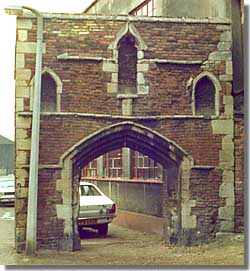
The various orders of friars were essentially a mission targeted at towns. The Church wished to use the friars to set an example of Christian values associated with modest lifestyle (to the point of austerity) and charitable behaviour. The friars played an important role in town life: preaching in public settings, providing spiritual services, their cemeteries offered sites for burial of townspeople, and they assisted in the improvement of living conditions through (for example) the creation of conduits for bringing in fresh water. They were popular with townspeople, as evidenced by the many bequests and gifts of land to them.
At Lynn, as in many other towns, it was in the thirteenth century that the friars established a presence. However, already the areas of Bishop's Lynn and Newland closest to the waterfront were already densely built up. Most of the friaries therefore built up what became quite extensive sites on the outskirts of the heavily settled areas in the eastern half of the area enclosed by the ditch/wall. The White Friars, however, acquired a site in sparsely settled South Lynn, along the western side of the road leading to the South Gate.
Little remains today of these friaries since, after the Dissolution, they were abandoned and their building materials were scavenged for use elsewhere. A tower of the Franciscan friary still stands, and one of the gateways, once-ruinous into the Whitefriars precinct also survives. The gateway was called Barfotesgate and led from the northern side of the friary into a road heading for the bridge across the Millfleet.
